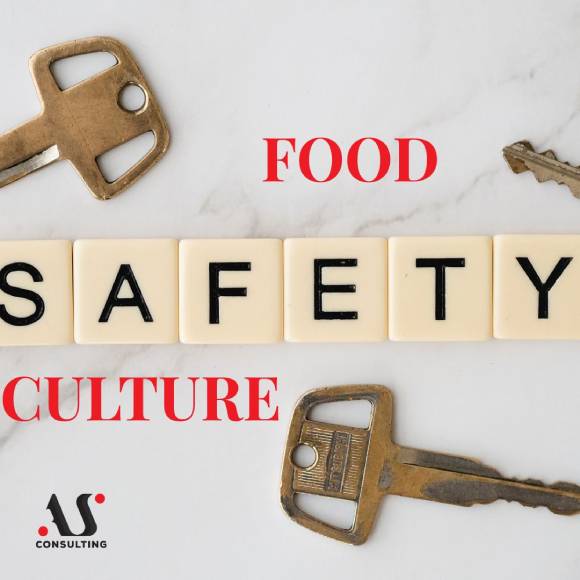
WASTE MANAGEMENT FROM THE ASPECT OF FOOD SAFETY STANDARDS
November 13, 2023
TRANSPORT AND STORAGE: IFS LOGISTIC STANDARD VERSION 3
January 17, 2024I believe that you have happened to find hair, insects or parts of insects, plastic, and in the worst case, glass, metal, traces of rodents in your food… What was your reaction to that?! The experience was probably unpleasant and probably at least prompted you to consider filing a complaint with the manufacturer?!
The appearance of foreign bodies, such as glass, metal, remains of insects or rodents, strands of hair, rubber, etc. is indeed the reason why companies receive complaints from their consumers, but also the reason that will discourage consumers from further using those products, as well as negative publicity for the company.
What are foreign materials (foreign bodies)? According to the IFS guide, “IFS Foreign Body Management guideline”, “everything that does not belong to the product is perceived by consumers as a foreign body.”
According to the same guide, we distinguish two different types of foreign bodies:
• endogenous foreign bodies that may originate from the product (eg core or bone) or
• exogenous foreign bodies that do not belong to the product (eg plastic parts).
Therefore, considering the wide range of foreign materials that can come into contact with food (objects made of glass, plastic, metal, wood, etc.), we can divide them according to the source from which they can come:
- human factor: hair and beard, jewelry, nails, makeup, cosmetics, other personal items (watches, phones, food, etc.);
- factors from the working environment: walls, floors, ceilings, lamps, cables, pests, etc.
- Factors involving machinery and equipment (joints, edges, painted parts, hard plastics, materials from conveyor belts, etc.)
- Factors that include tools and aids (scalpels, knives, crates/boxes, tools, pencils, staples, etc.);
How to control (and manage!) foreign materials?
Foreign material management is much more than simply installing a metal detector (or some other type of metal detector) at the end of the production line. It implies a comprehensive risk analysis that will include at least the following sources of foreign bodies:
- Suppliers (raw materials and packaging that can often be contaminated with foreign bodies, eg during the harvesting process – leaves, stones, dust, etc.);
- Receipt of goods, storage and preparation (foreign bodies that may originate from raw materials and packaging, transport, storage – insects and rodents, dust, etc.);
- Processing of raw materials and products (various factors during the production process: employees, working environment, machines and equipment, etc.);
- Transport/logistics (internal/external)
- Packaging
- People/material (eg accessibility, care, tools, sabotage, protective clothing, personal conduct, etc.)
- Work environment (eg peeling paint, plaster, lights, windows, etc.)
When the (potential) sources of foreign bodies are established, the decision to define preventive measures is facilitated for the company. Preventive measures may include methods for:
• Detection of foreign bodies (metal detectors, optical sorters, visual detection, X-ray, etc.);
• Removal of foreign bodies (filters, sieves, magnets)
Filters, sieves, magnets: equipment used to remove foreign bodies or separate foreign bodies from raw materials, but also to protect machines and devices from damage by foreign bodies. Depending on the type of material, the size or strength of the equipment for removing foreign bodies is selected (sieve mesh size, magnet strength);
This equipment implies controls and operations by the company namely:
- Control of visual damage (eg breakage of sieves, filters, deformation);
- Cleaning of detection equipment
Metal detectors: With a metal detector, the product moves through an electromagnetic field. Metal parts can also be detected inside the product because they cause changes in the electromagnetic field. With this, the company provides complete control by being able to detect a potential hazard at the end of the production process that was not removed by some of the methods during the production process.
X-ray equipment: X-rays are used to scan for foreign bodies that absorb a greater amount of radiation compared to the product they are contained within. The amount of absorbed X-ray radiation depends on the thickness and density of the product. Impurities such as glass or metal become visible during X-ray examination due to their different density.
Optical sorters work on the principle of passing the product through the machine, where the product is constantly recorded by cameras and lasers and compared with the previously loaded criteria of a good product, and based on that, the product that does not meet the given criteria is rejected.
How to choose a suitable detector? Based on the expected hazards that may occur in the product. For example, in the case of fruit, where the appearance of leaves, stones, fabric threads, glass, rubber, etc. is expected, an optical sorter will be selected that will be able to recognize all loaded (potential) hazards.
Visual control, yes or no? Visual inspection can and should be used in cases where the risk analysis has proven that this will be an appropriate preventive measure to meet and/or eliminate potential hazards for the product. Also, in certain types of production, it is not possible to carry out inspection only by machines. In order for the visual inspection to be adequate, the employees must be trained, but the conditions in the working environment must also be ensured (such as adequate lighting, replacement of employees due to fatigue, etc.).




